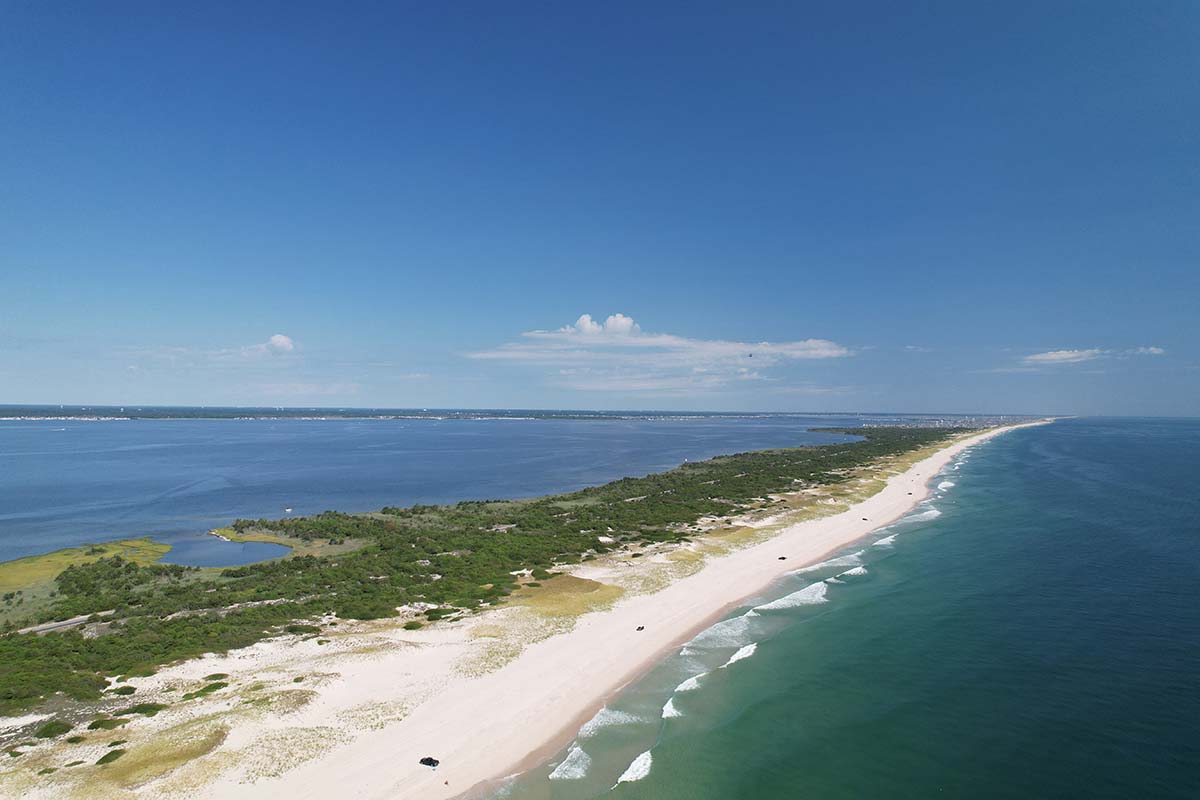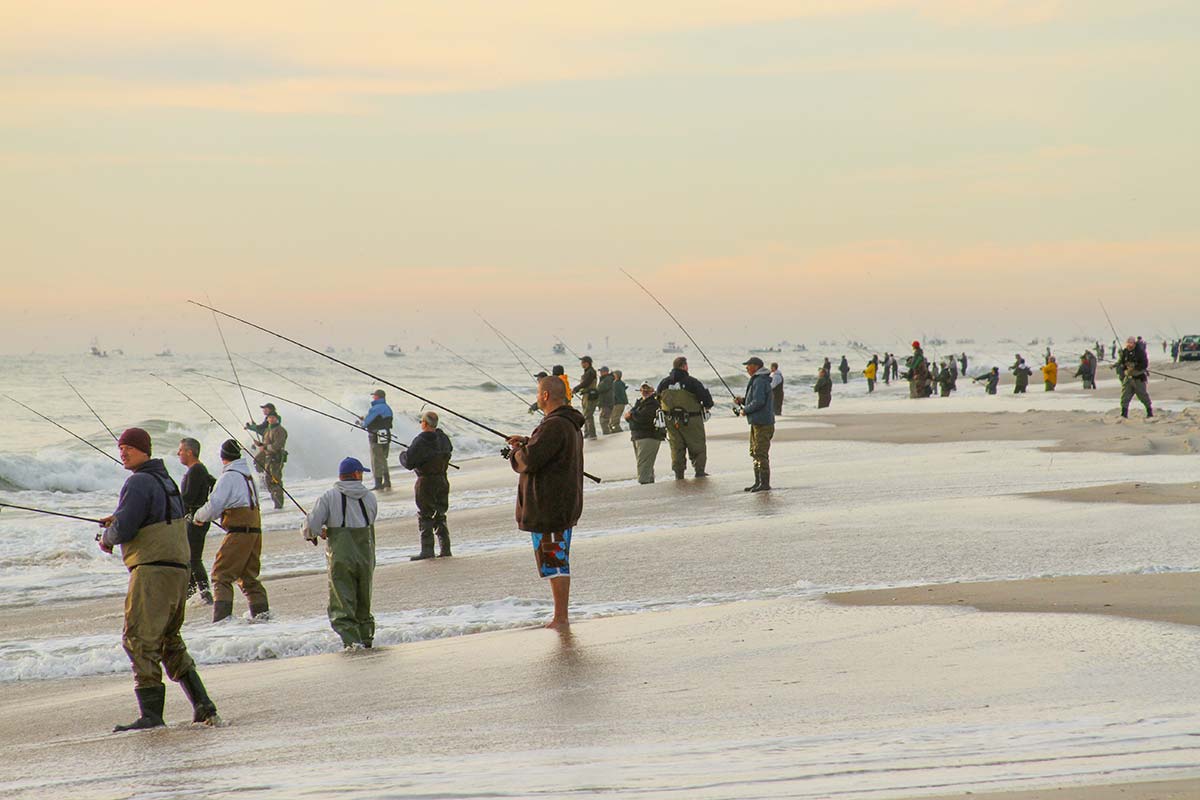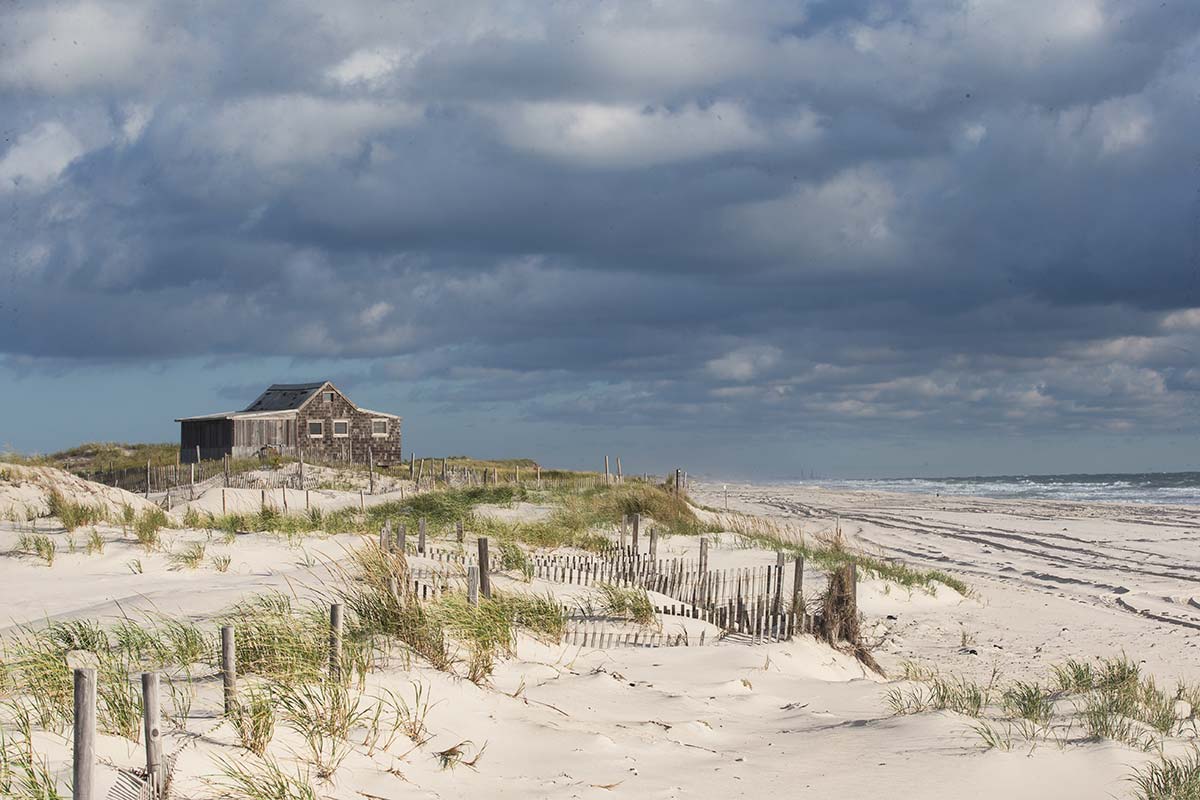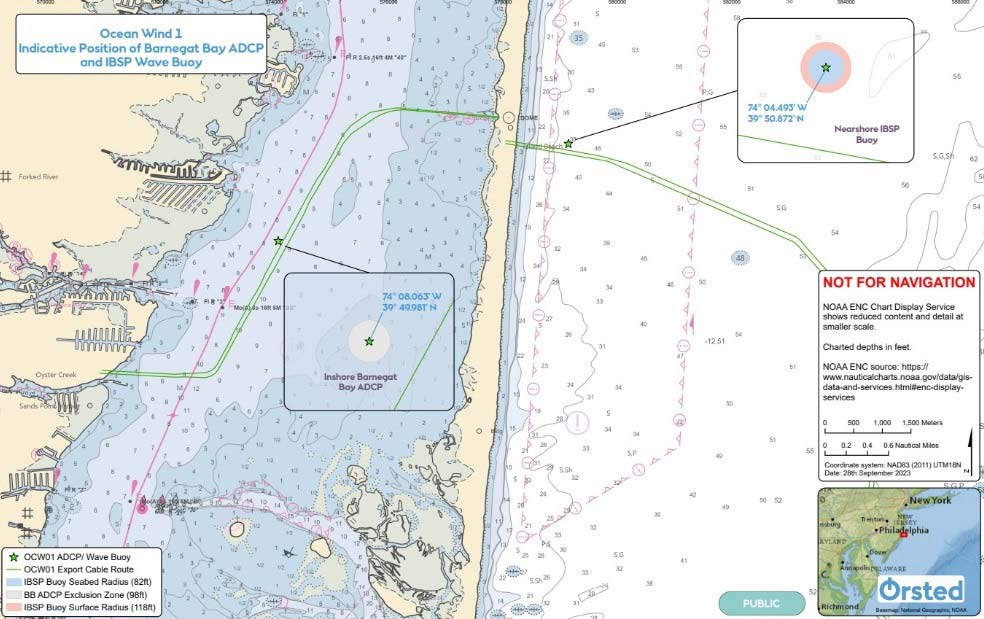Photos by Tom Lynch

A century after nearly becoming a steel magnate’s resort, IBSP is now back in industrialist crosshairs.
Island Beach State Park (IBSP) turned 70 years old this year. The anniversary corresponds to the 1953 purchase by the State of New Jersey for $2.7 million from steel magnate Henry C. Phipps, a partner of Andrew Carnegie. Phipps bought the stretch of land in 1926 with visions of turning it into an exclusive seashore resort; ultimately, the 1929 stock market crash upended Phipps’ grandiose development plans.
Well before Island Beach was nearly transformed into a steel magnate’s exclusive resort, it was granted to the Earl of Stirling by Charles I of England in 1635. By the 18th and 19th centuries, the area was inhabited mostly by fishermen and members of the U.S. Lifesaving Service. Then during World War II, the US Army and Johns Hopkins University began a series of anti-aircraft rocketry experiments, leading to the supersonic ramjet rocket making its first successful flight there at Island Beach in 1945.
Until 1954, it was actually considered a town in New Jersey known as the Borough of Island Beach. The 2,694-acre Phipps estate and additional lands would officially open as a state park in 1959, and according to the New Jersey Department of Environmental Protection (NJDEP), the acquisition was made to “preserve the natural beauty of the island and provide recreation for swimmers, hikers, anglers and outdoor enthusiasts.”
Island Beach is not actually an island of course. But it was up until around 1812 when Cranberry Inlet (once known as New Inlet or Toms River Inlet) connecting Barnegat Bay with the Atlantic Ocean roughly between what is now Seaside Heights and Ortley Beach (Michael Ortley was one of the individuals who tried unsuccessfully to reopen Cranberry Inlet in 1821). Prior to that, Cranberry Inlet would’ve provided a relatively straight shot for pirates and privateers from the ocean to the Port of Toms River.
Through the 1953 purchase by the state and accompanying legislative protections, IBSP stands today as the largest reserve of undeveloped, nonindustrial barrier island in the entire Garden State.
This history of “The Park” does beg the question – considering that Østed is now digging up IBSP to lay high-powered cable through the auxiliary parking lot of Swimming Area 2 and across the Barnegat Bay towards the former Oyster Creek nuclear generating station in an effort to run electricity from industrial offshore wind substations to sell back to the public at a profit, does this “undeveloped” and “nonindustrial” claim still hold water?
The devil’s in the details.

Groundbreaking
In an October 5, 2023 article at NJ.com, onshore construction work for New Jersey’s first offshore wind farm was officially announced to begin in both Lacey Township and at Island Beach State Park. “The October 10 construction includes work to ultimately install copper and aluminum cables meant to connect with the electric grid at substations located at former power plants in Ocean and Cape May Counties,” wrote NJ.com reporter Steven Rodas, adding that work will run through May of 2024 before resuming next September, citing the developers at Ørsted as saying “so as to not disturb summer tourism.”
Days later, journalist Veronica Flesher of the Patch.com wrote “Cables for the Ocean Wind 1 project will connect to what is called the Lanoka substation, which will be located at the former Oyster Creek nuclear plant in Lacey.” Flesher’s October 10th feature explained how the cable route will run along Discharge Drive, then under Oyster Creek and Route 9 onto private land towards Barnegat Bay to connect to the underground duct bank of cables to be installed at IBSP.
According to Flesher’s Patch.com article, Ørsted plans to use horizontal directional drilling (HDD) to avoid disruption to traffic flow which will be done sometime in November and December, with some more “limited activity” ahead in January. “Shore Road next to Island Beach State Park will remain open throughout construction, though limited to one lane by a construction zone at one point,” wrote Flesher, quoting Ørsted representatives as saying “There will still be access to fishing.”
I began following this story in my weekly video fishing forecast on September 14th, having received a tip that Ørsted reps were already on scene at IBSP. A week after my first official inquiries, The Fisherman received official notification from the New Jersey Department of Environmental Protection (NJDEP) that pre-construction sampling work for the Ocean Wind 1 offshore wind facility cabling had been underway at IBSP since at least September 19.
“Ørsted has notified the New Jersey Department of Environmental Protection that it plans to start upland preparation work at Island Beach State Park in October, and the State Park Service anticipates that any impacts to the public will be minimal,” said NJDEP senior press officer Caryn Shinske. Ms. Shinske was originally reached for comment on September 11 about the ongoing sewer work at IBSP and rumors about Ørsted personnel onsite for the project; she provided The Fisherman with the actual quote eight days later, effectively corroborating the rumors that Ørsted was indeed in The Park.
“While actual construction work will not commence until mid-October, some additional samplings, or borings, will be taken between now and the start of construction,” Ms. Shinske said in her email, adding that NJDEP expects to have an updated construction schedule for the entire Ocean Wind 1 project by September 30.
The actual “samplings, or borings” work at IBSP had taken many folks by surprise, including local elected officials. Borough of Seaside Park Mayor John A. Peterson, Jr. told The Fisherman that he’d heard from his constituents about the ongoing work nearby at the park, but as mayor he was not provided much information about the ongoing work by the state.
“We’ve asked a number a number of questions and in our mind we have not had anywhere near adequate answers,” Mayor Peterson said in an interview airing on The Fisherman’s weekly video fishing forecast on September 21. The mayor said that while NJDEP has less than forthcoming with details about the ongoing work, in discussions with some workers onsite he was able to establish that Ørsted work was already under way in September, with more to come in October.
“They’ve indicated that they’re employed by that entity (Ørsted) and they’re going to start a construction project very soon, probably as soon as October, and they’ve indicated that they’re going to move heavy equipment and large trucks right through our municipality,” Peterson said.
Ms. Shinske did not elaborate on what those “minimal” impacts to public access at IBSP would look like, but for surfcasters and local businesses, full accessibility to these beaches during the fall run is of critical importance. “As long as the access is not closed off completely,” said John Bushell, Jr. the third generation owner of Betty and Nicks Bait & Tackle in Seaside Park.
“I’m not for the windmills at all to be honest with you, but as long as there is some access to all areas, I guess it is what it is, but Island Beach State Park is the lifeblood of this area,” Bushell added.

Pros & Cons
While surfcasters may ultimately be impacted during the height of the fall run, not everyone appears upset about the industrial cable work at IBSP. “We believe that these locations are some of the best places to bring that energy,” said Jeff Tittel, longtime former director of the New Jersey Sierra Club, in an earlier statement regarding this work, explaining how substations and transmission lines were already in place to connect to.
Tittel was referencing the onshore locations where power from the offshore turbines would ultimately connect to the grid, at the former B.L. England Generating Station at Beesley’s Point in Cape May County, as well as through IBSP to run across Barnegat Bay to the old Oyster Creek facility. Contractors for Ørsted first began cutting through the streets of Ocean City on September 12, with work then underway at IBSP and Lacey Township commencing soon after.
Ocean Wind 1 is an offshore industrial wind site planned for construction approximately 15 miles off Cape May County in Ocean City by Ørsted A/S (formerly DONG Energy), a Danish multinational energy company. According to Ørsted’s website, construction gets underway this fall with the project scheduled for operations in 2025 to deploy 98 GE Haliade-X turbines with a 12-megawatt production capacity.
The authorization to finally industrialize IBSP after 64 years of strict preservation policies came by way of a Construction and Operations Plan approval by the federal Bureau of Ocean Energy Management (BOEM) on September 21. In a letter written by Karen J. Baker Chief in BOEM’s Office of Renewable Energy Programs to Rob Keiser at Ocean Wind LLC (c/o Ørsted North America, Inc.), the agency officially granted easements for the work.
| NOTICE TO MARINERS |
| On or around October 11, Ørsted’s Ocean Wind 1 construction crews were expected to install temporary wave and current monitoring instruments east of IBSP to collect real-time data “to support met-ocean forecasting and operational safety during construction.” That deployment was to be followed up with an Acoustic Doppler Current Profiler in Barnegat Bay; each instrument denoted on the chart with a green star. The narrow double-line on the chart represents the path of the industrial offshore wind cable from the Ocean Wind 1 turbine clusters planned for deployment starting next year, through IBSP at the swimming area and then out to the middle of Barnegat Bay where the high-powered cable will run approximately 2-1/2 miles south parallel to the ICW past the BB Buoy before coming ashore above Oyster Creek.
|
And just like any landlord with a lease agreement, BOEM also outlined the conditions. “The first year’s rent payment of $31,535 for the project easement is due within 45 days of your receipt of this letter,” Ms. Baker wrote, adding “For the next year and for each subsequent year, annual rent for both the lease area and the project easement area is due on each lease anniversary. Accordingly, the next annual rent payment is due on March 1, 2024.”
Fiscally speaking, not everything has been sunshine and rainbows for Ørsted and other industrial offshore wind developers who are now seeking to renegotiate state and federal contracts in order to offset the rising cost of building and financing projects. In August, shares in Ørsted stock plunged 25% after declaring $2.3 billion in losses due to supply delays, high interest rates and a lack of new tax credits; the company’s CEO also warned of a “walk away scenario” for the Danish energy giant unless conditions change and/or more taxpayer funds are made available.
Earlier this summer, New Jersey Gov. Phil Murphy signed a law allowing Ørsted to keep federal tax credits that were otherwise destined for ratepayers, but the corporation is continuing to pressure the federal government for more taxpayer subsidies. “Ørsted is on fiscal shaky ground, even after successfully coercing $1 billion New Jersey dollars from the legislature that was originally destined for New Jersey rate payers,” said Cindy Zipf, executive director at Clean Ocean Action (COA), explaining how this “multibillion dollar foreign-owned megacorporation has now moved on to Washington, DC, to demand even more money, claiming they will walk if they don’t get it.
“Clearly there are no guarantees that Ørsted will stick around, so why is our government allowing them to rip up the park now? And then the Barnegat Bay?” Zipf added.
Sources for this article include the Friends of Island Beach, the New Jersey Department of Environmental Protection and Betty & Nicks of Seaside Park, as well as Patch.com and NJ.com. No bureaucrats were physically harmed in the writing of this article, but several may have been left feeling somewhat chapped.





